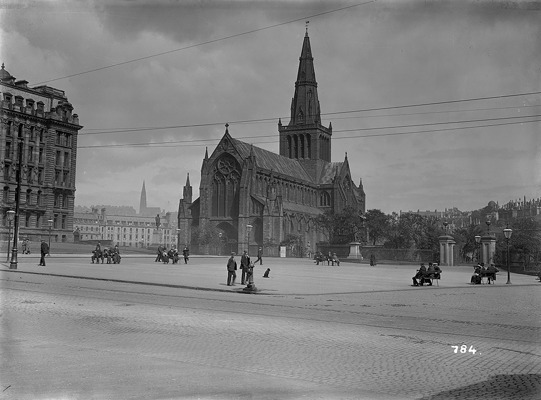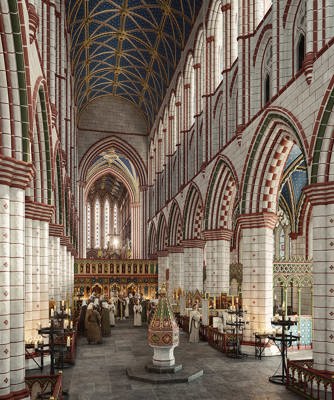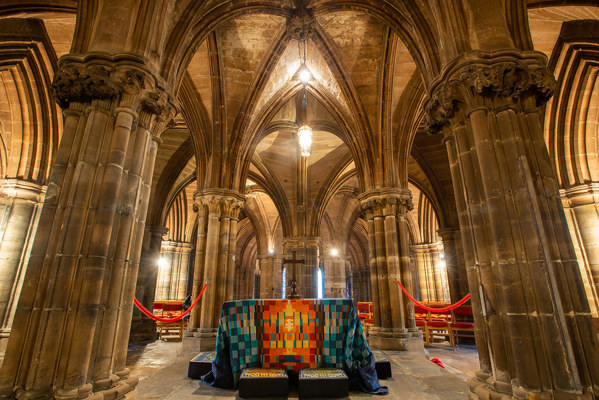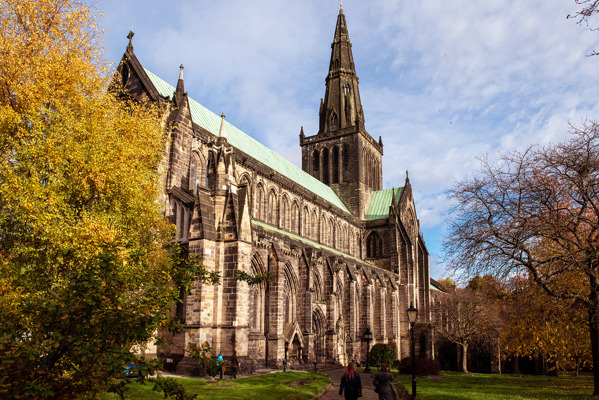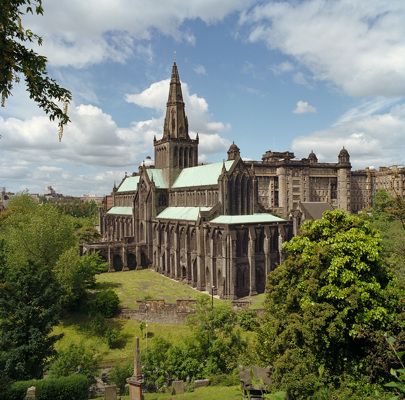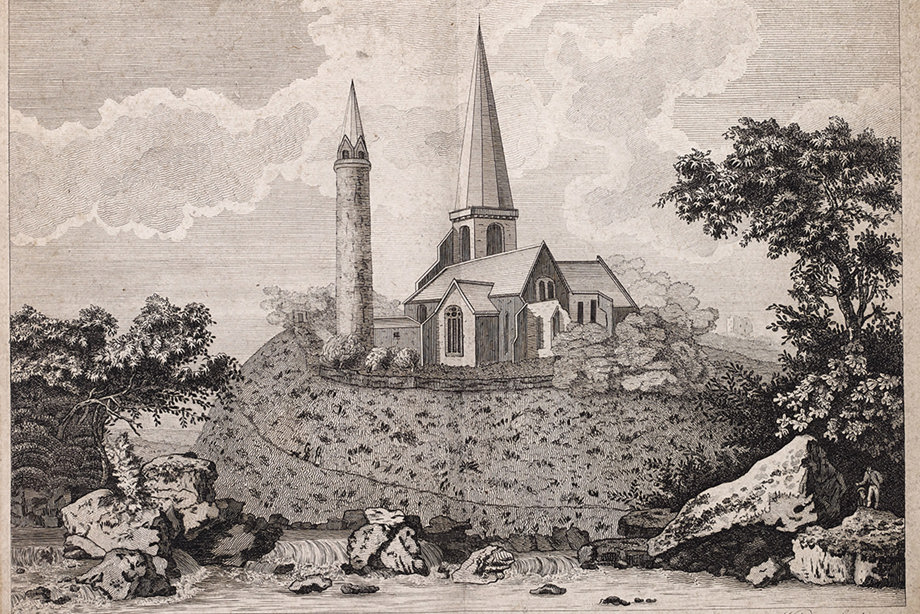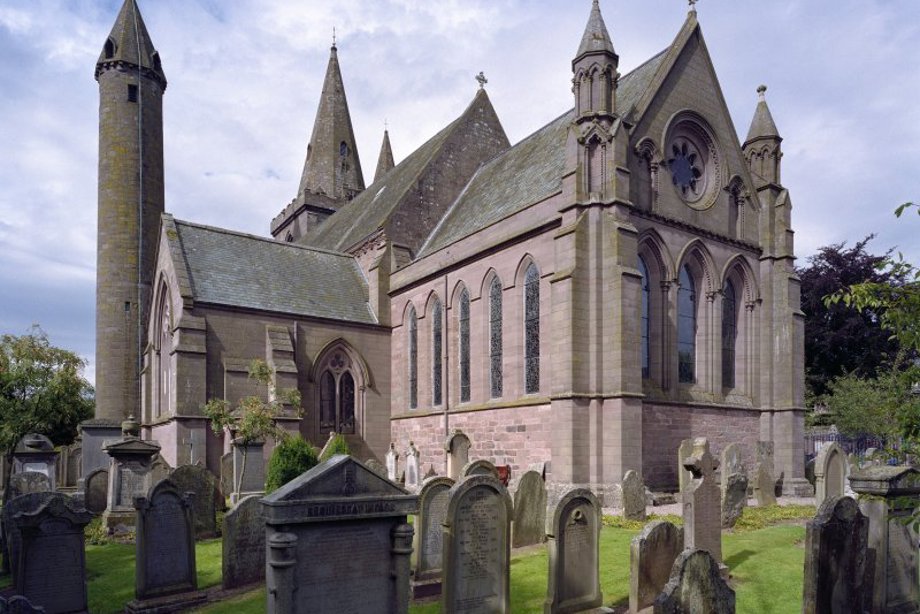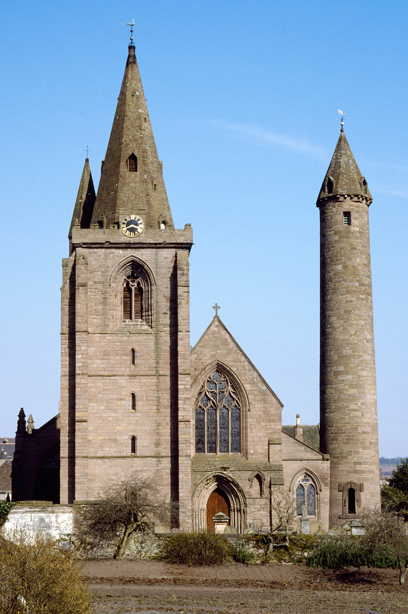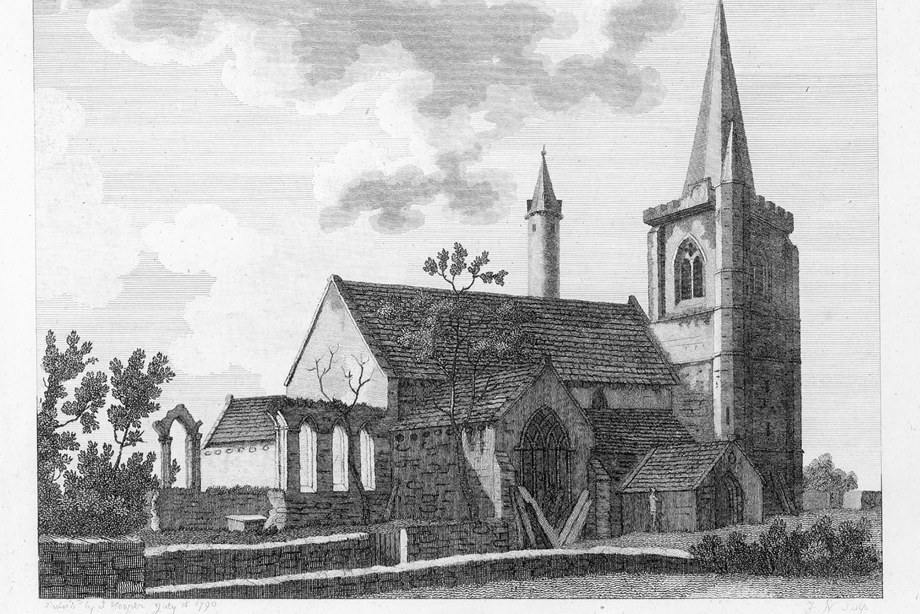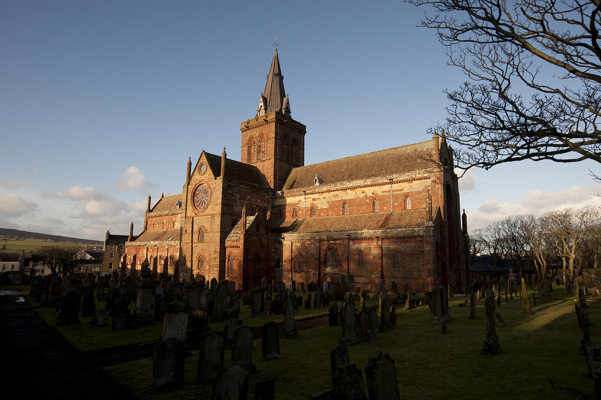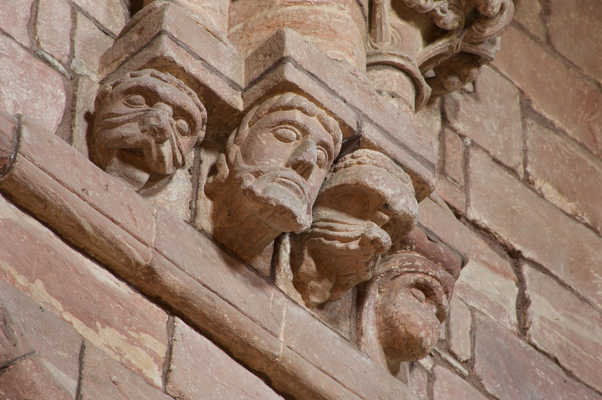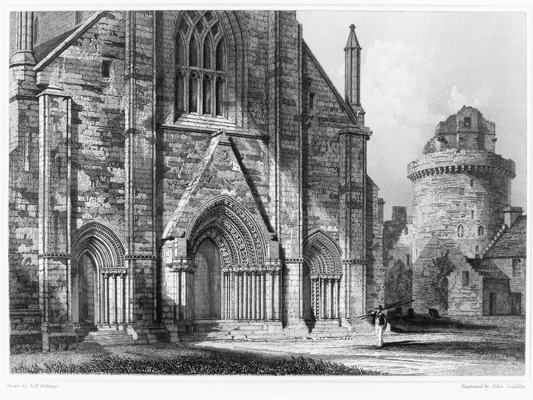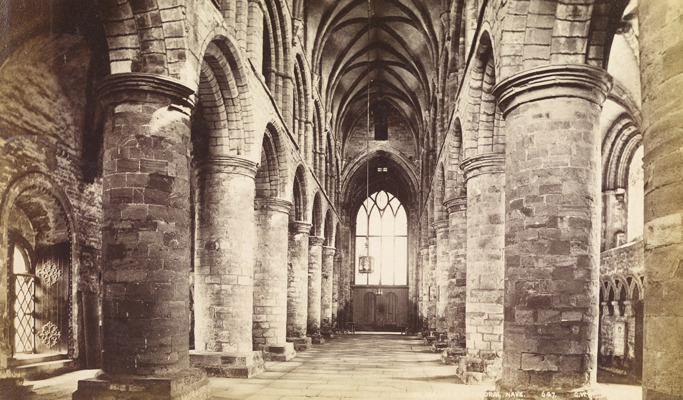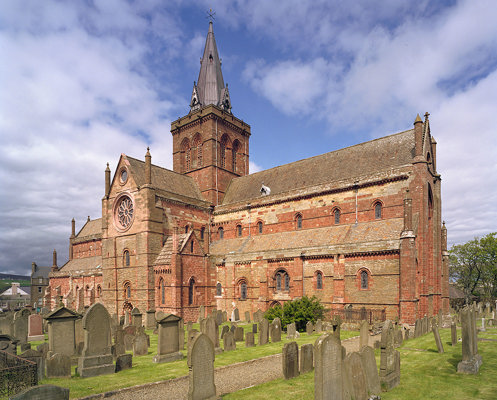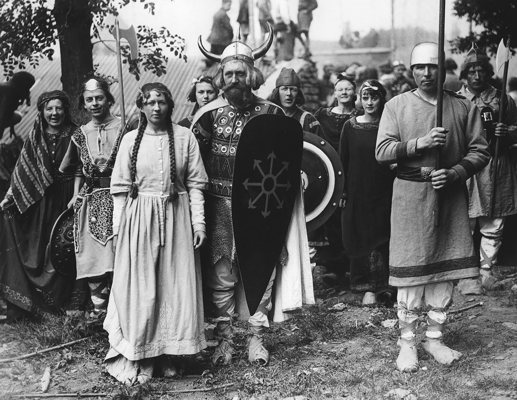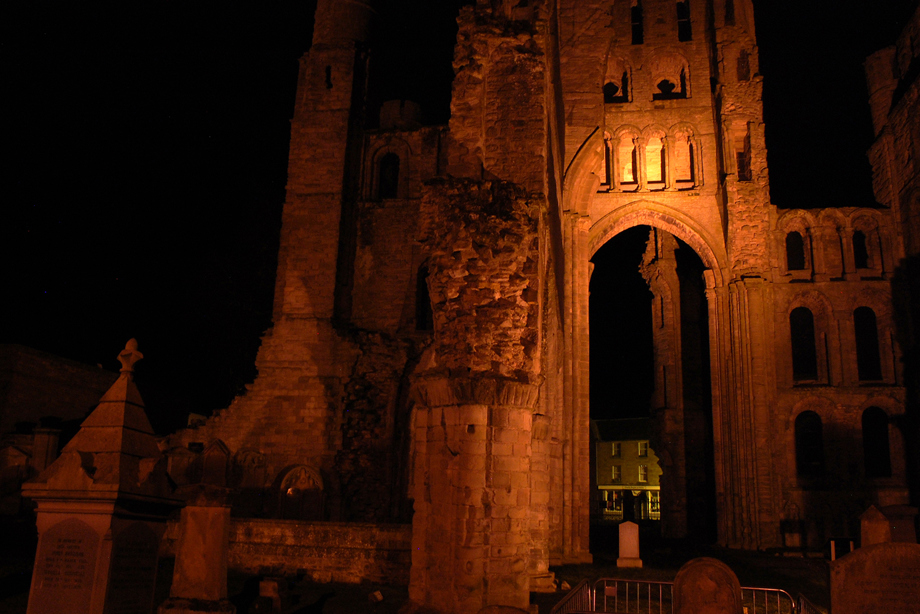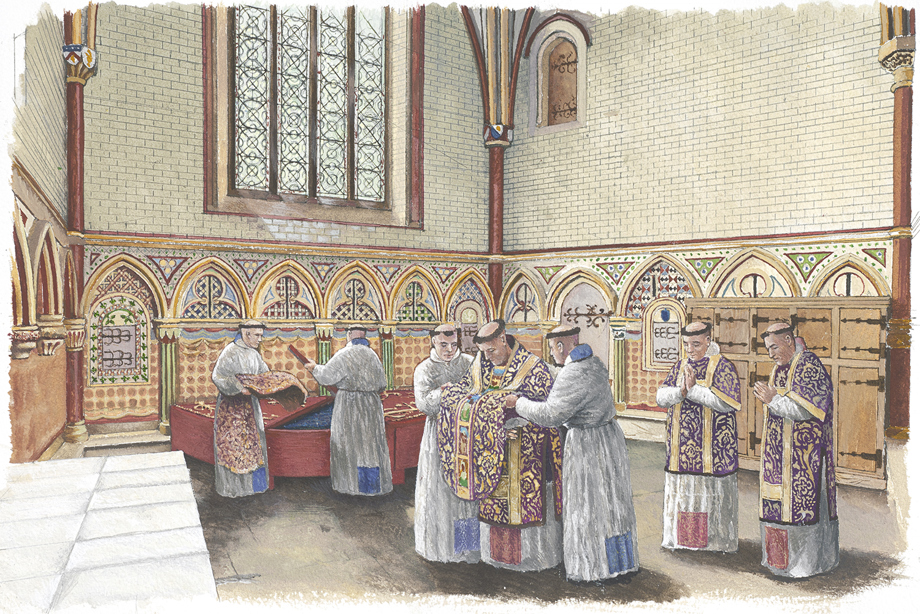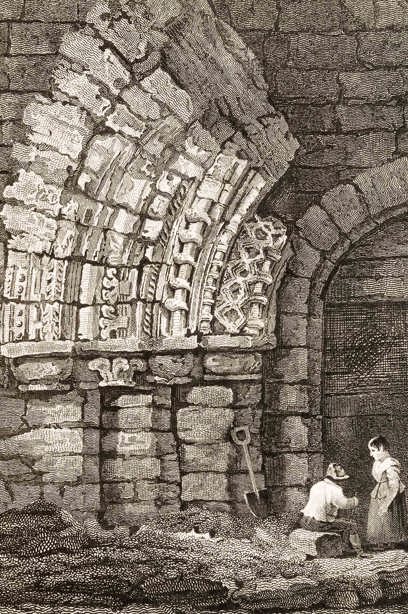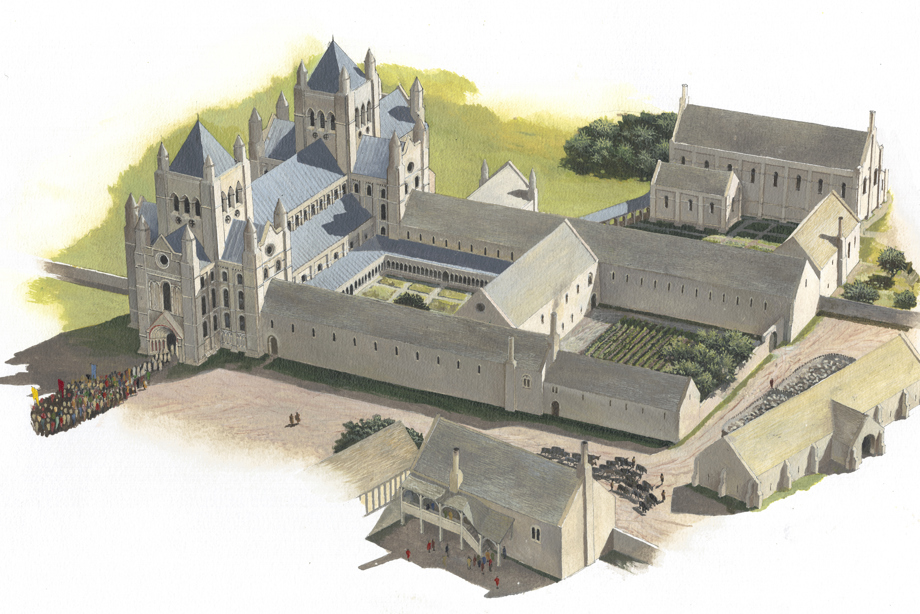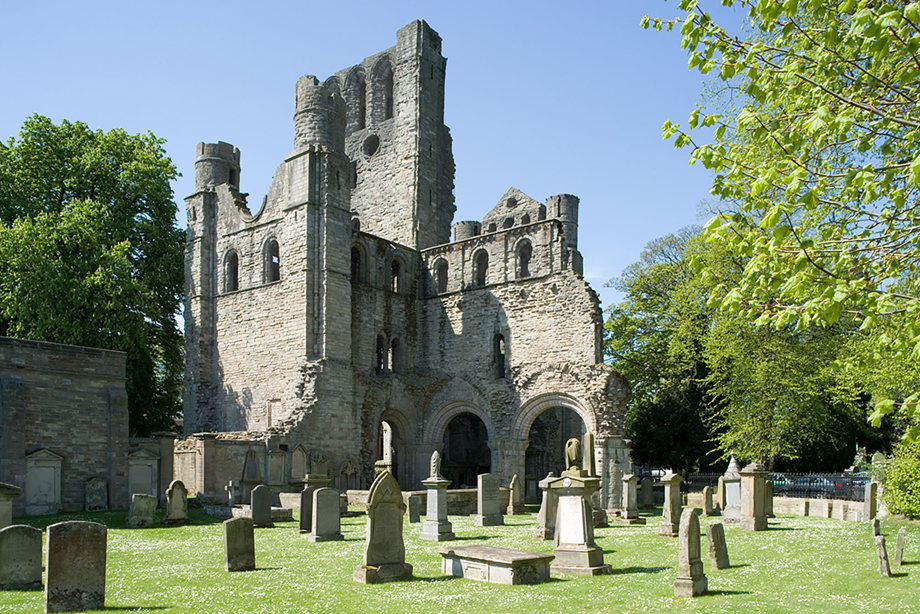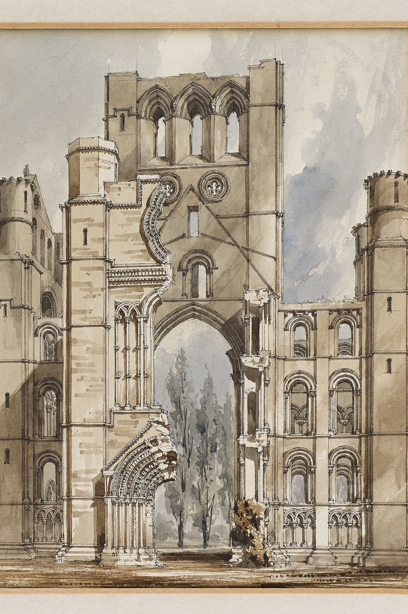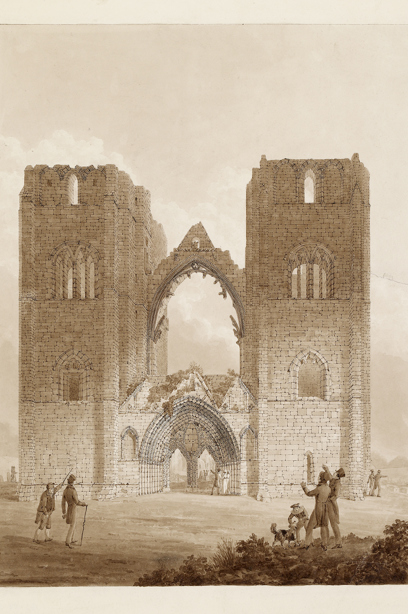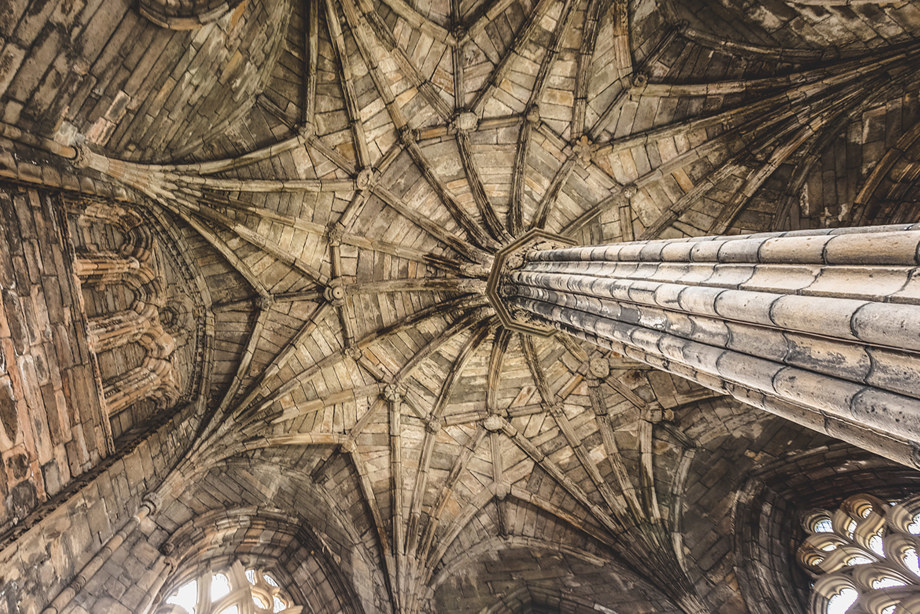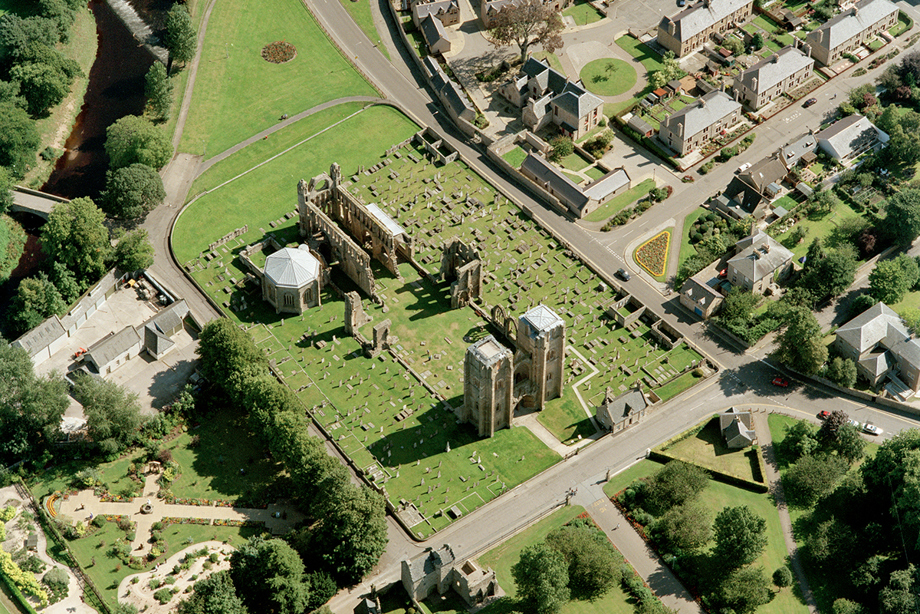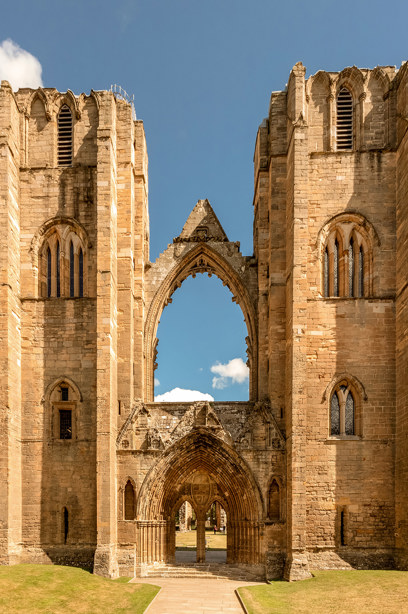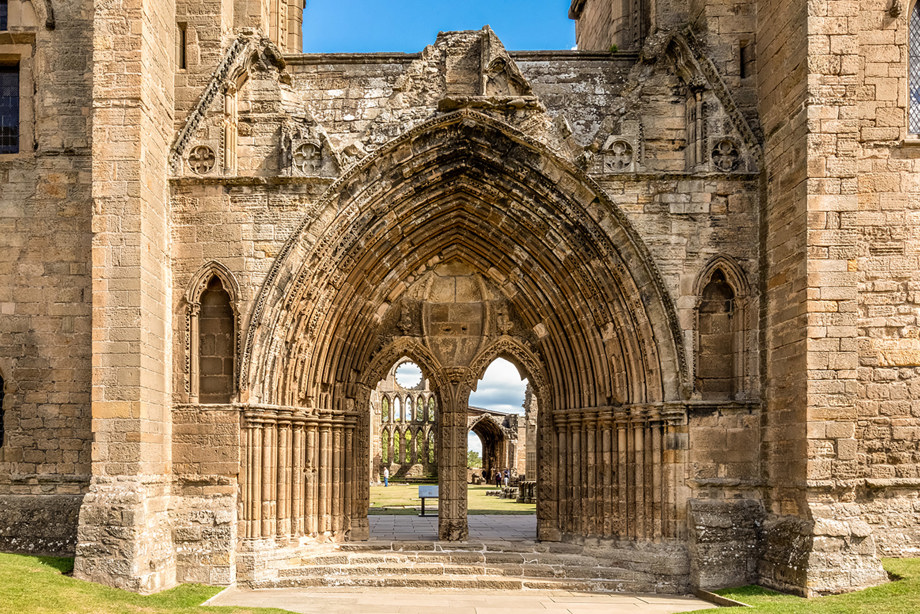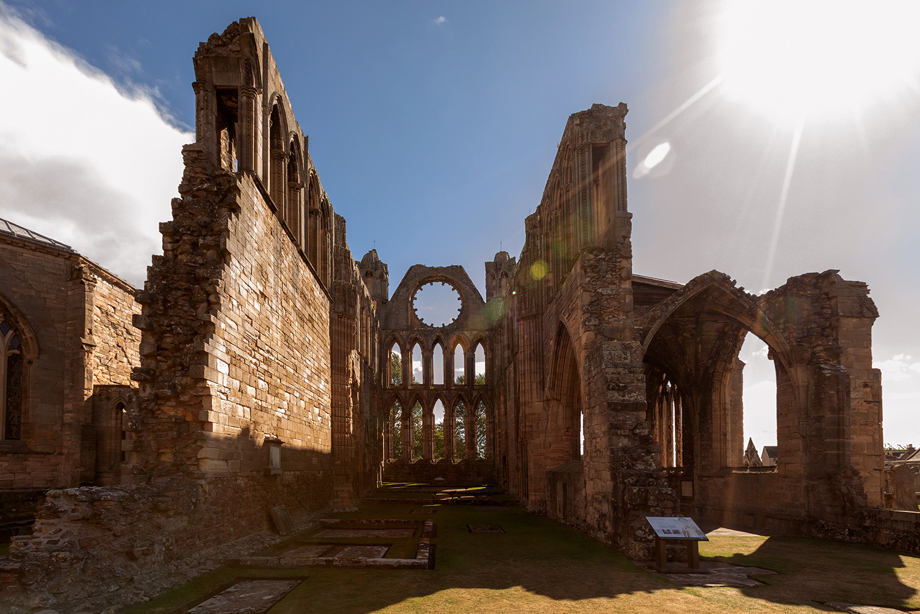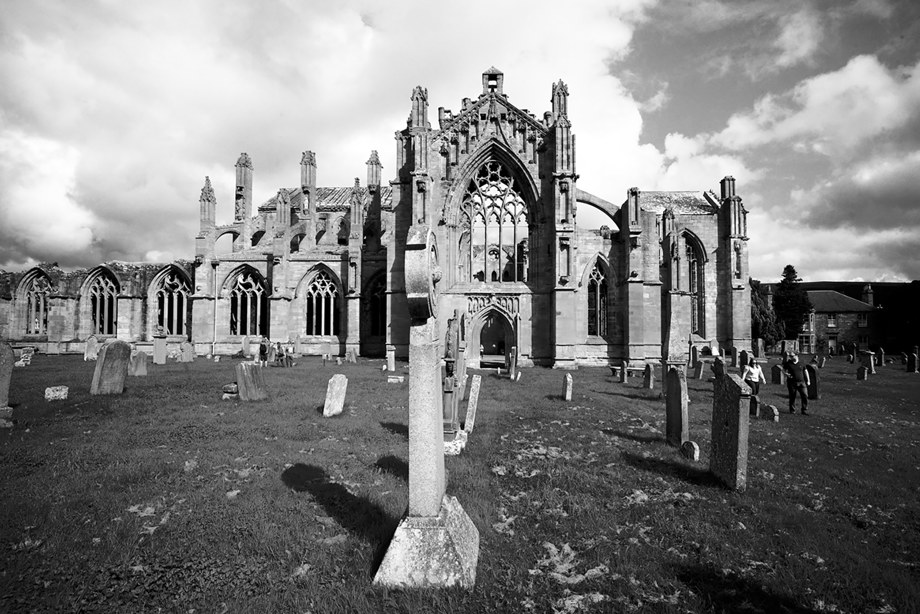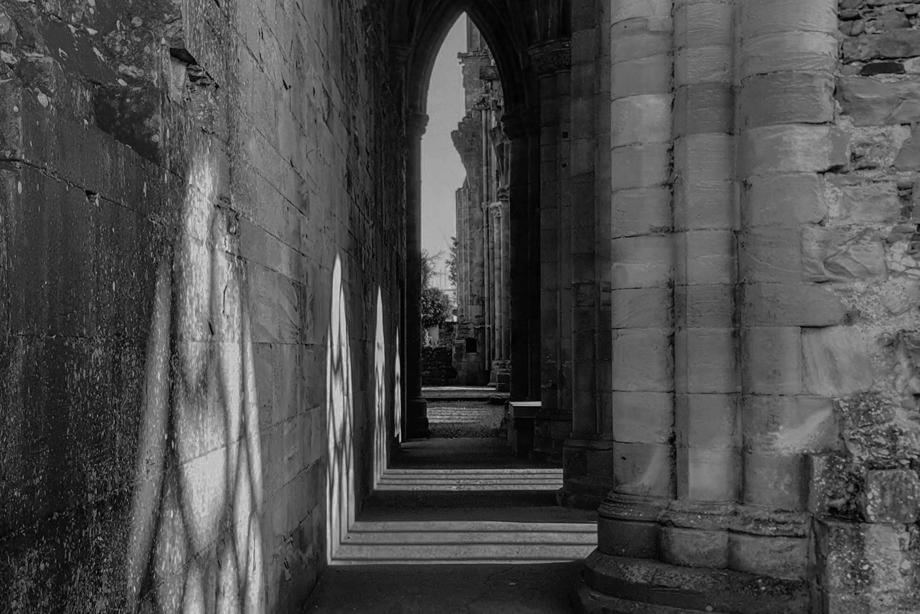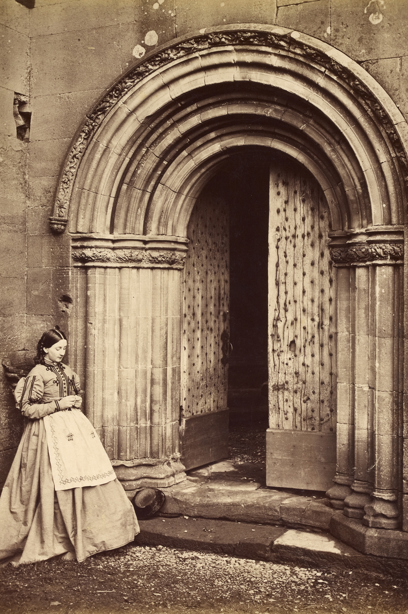Scotland’s cathedrals and abbeys demonstrate the incredible skill that medieval builders and craftspeople brought to their construction. These impressive buildings dominated the landscape and their undertaking was a major commitment in terms of time and resources, often taking several generations to complete.
The sacred spaces dedicated to saints sometimes contained their relics. These attracted pilgrims to pray nearby as many believed these holy remains had miraculous, divine power.
As interest in the ancient buildings themselves increased towards the end of the 18th century, these historic sites began to attract antiquarians who wanted to study the buildings. They also became a popular subject for amateur and professional artists and, later, photographers.
Our medieval masterpieces remain a treasured aspect of Scotland’s architectural riches and, in the case of Iona Abbey and Whithorn Priory, continue to attract Christian pilgrims today.
Glasgow Cathedral, City of Glasgow
As Christianity flourished and cathedrals were founded, large settlements often developed around them. Sometimes the sites chosen for the cathedrals had sacred associations, as was the case for Glasgow Cathedral.
The cathedral was built on the site where St Kentigern (also known as St Mungo) was believed to have established a church around 600AD. Although we cannot be certain that this was the case, it is thought that Kentigern was buried on the site around 612AD. It wasn’t until many centuries later, in the 1100s, that the site of today’s cathedral was dedicated to him. By this time, pilgrims were flocking here and a thriving burgh grew to accommodate them.
Eventually a lower church was created below the cathedral choir as a shrine to hold the saint’s relics, although these were removed around 500 years ago and there is no record of what happened to them.
Glasgow Cathedral was significantly altered and extended over the centuries, taking around 400 years to finish. Although it was stripped of its Catholic furnishings during the Reformation in 1560, it was decided to continue using the building for Protestant worship and, as a result, it has survived as the most complete medieval cathedral on mainland Scotland.
Brechin Cathedral Round Tower, Angus
Free-standing round towers, like the one that survives at Brechin Cathedral, are rare in Scotland. There is only one other example, at Abernethy, although there are many in Ireland.
The Brechin tower, and some of the sculptures preserved within the cathedral, are all that survive of an early monastery that once stood here, believed to date from the 11th century.
The tower became attached to the cathedral in the 1800s when the latter underwent extensive renovation. The tower seems originally to have been divided by wooden floors into seven stories. The reason for its doorway being placed two meters up from the ground, so that it had to be accessed using a ladder, remains a mystery.
St Magnus Cathedral, Kirkwall, Orkney
Over the centuries there are examples of religious buildings that were specifically created as shrines for saints’ relics, such as bodily remains or objects associated with them. One such example relates to Earl Magnus who was murdered on Egilsay in the early 1100s by his cousin Haakon.
Magnus and Haakon jointly ruled Orkney and they were in a dispute over who would succeed them. The church at Birsay, where Magnus’ body was laid to rest, became a focus of pilgrimage.
The Orkneyinga Saga tells how 'a bright heavenly light’ was often seen over Magnus' grave and that some pilgrims were cured of illnesses while asking for his intercession there. The cult that grew up around his memory led to his canonisation c.1134.
Following his canonisation as a saint, it was decided to move St Magnus’ relics to Kirkwall and, almost immediately, work began on a cathedral dedicated to him. Centuries later, his relics were discovered inside a pillar during renovation work carried out on the cathedral in 1919.
Kelso Abbey, The Scottish Borders
Around 1113, Tironensian monks were invited to Scotland by the future King David I to establish a presence in Selkirk. In 1128, Kelso emerged as a preferred location and they spent the following century building an impressive abbey church that became the heart of a thriving community.
At its height, Kelso was one of the richest monasteries in Scotland and the monks became influential in Scottish religious life. They received revenue from over 30 churches and from money made by their brewing, milling, and trading in wool.
All this was to disappear after repeated English invasions and the Reformation. Decades later, in 1587, the last monk to remain at the abbey died but, despite this, it remained in use as a parish church into the 1700s.
The impressive ruins of the abbey’s west tower are virtually all that survive standing of the church. The plan of the church itself was unusual for Scotland as it was in the form of a double cross instead of the more usual single cross shape. The design may have been based on churches found in the north of the Holy Roman Empire, part of what is now Germany.
Elgin Cathedral, Moray
Although now a shattered ruin and a shadow of its former splendour, Elgin Cathedral remains one of the most impressive of Scotland’s medieval cathedrals.
Ravaged by fire in the 13th century, its decay was accelerated when the Privy Council issued orders in 1567-8 to strip the valuable lead from its roof.
By 1824, interest in historic places had grown so much that a custodian had to be appointed to oversee the volume of visitors and management of the historic site.
John Shanks, a shoemaker from Elgin, approached his new responsibility with enthusiasm. Not only did he clear the grounds of rubbish, unfortunately he also removed centuries of accumulated rubble, and archaeological evidence, along with it.
3D model of stone tomb slab from Elgin Cathedral
Found at Elgin Cathedral, this tomb slab is carved with a shield bearing a stags head with a star between the antlers. Above the shield is a helmet, mantling and wreath. The words ‘COELUM FIDE CERNO’ are emblazoned across the top. At the foot of the slab are two groups of initials. The left side reads ‘M B O’, and the right side reads ‘M I M’. The head and wings of a cherub are carved below the initials, flanked on each side by a rose.
Vir Perfect: polyphonic chant
Listen to a polyphonic chant that would have been sung by worshipping medieval monks.
Melrose Abbey, The Scottish Borders
Melrose Abbey’s place in the popular imagination was arguably sealed when Robert the Bruce chose this historic site as the resting place for his heart. The exact location of the romantic relic is disputed but there are those who believe that a casket discovered in 1921 during an archaeological excavation contained his heart.
Such a significant discovery was unexpected. Over the centuries, many believed that Bruce’s heart had been moved, stolen, or destroyed. The reason for this is related to the strategic choice of King David I of Scotland to build Melrose in 1136. He ensured that this substantial Cistercian monastery was situated very close the Scottish/English border.
Illuminating artefacts
Take a look at these collections items from Melrose Abbey, each illustrating the significance of reading and literacy to the monks living there.
Places for Prayer continued
Discover how rich individuals used their wealth to influence the building and design of Scotland's churches to ensure salvation for themselves and their family.

